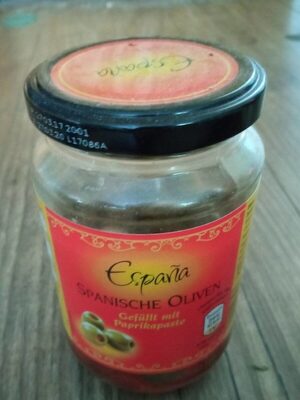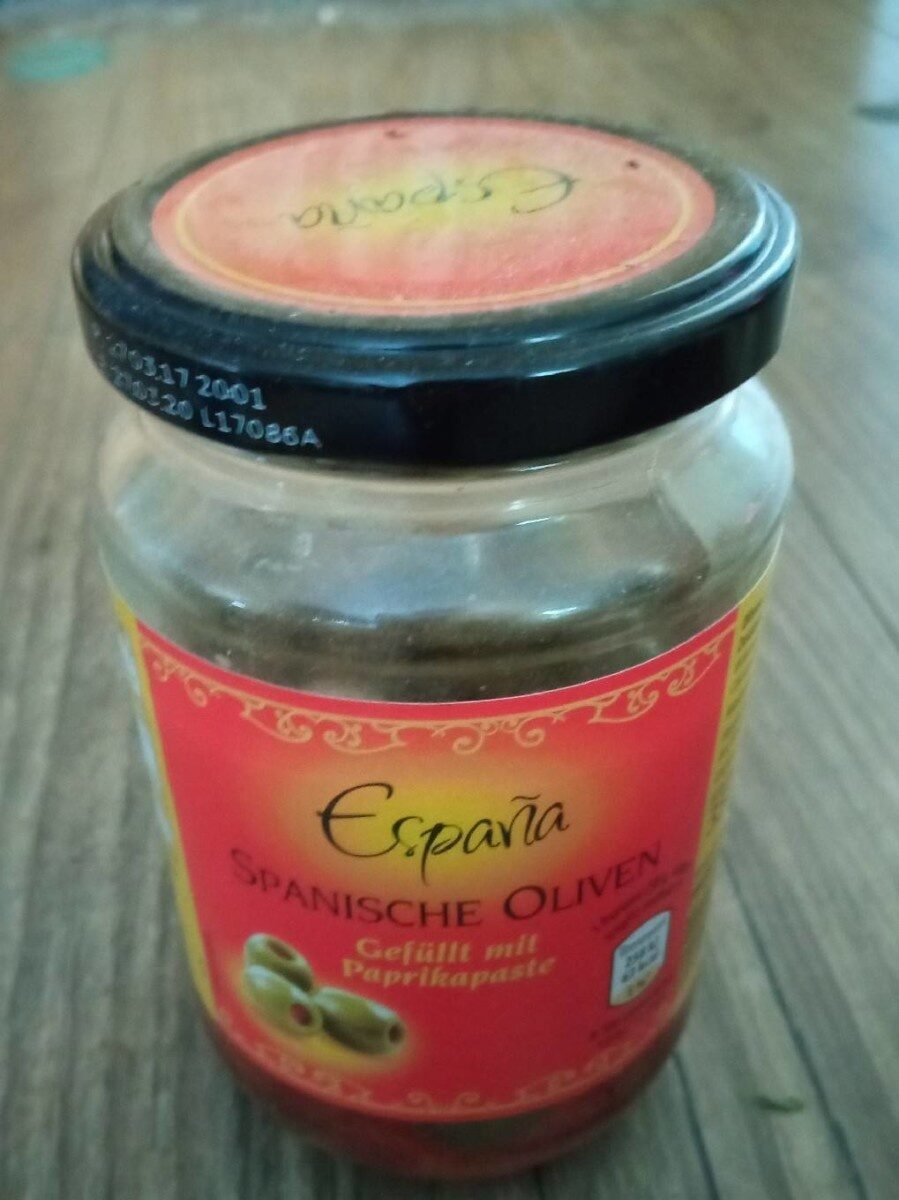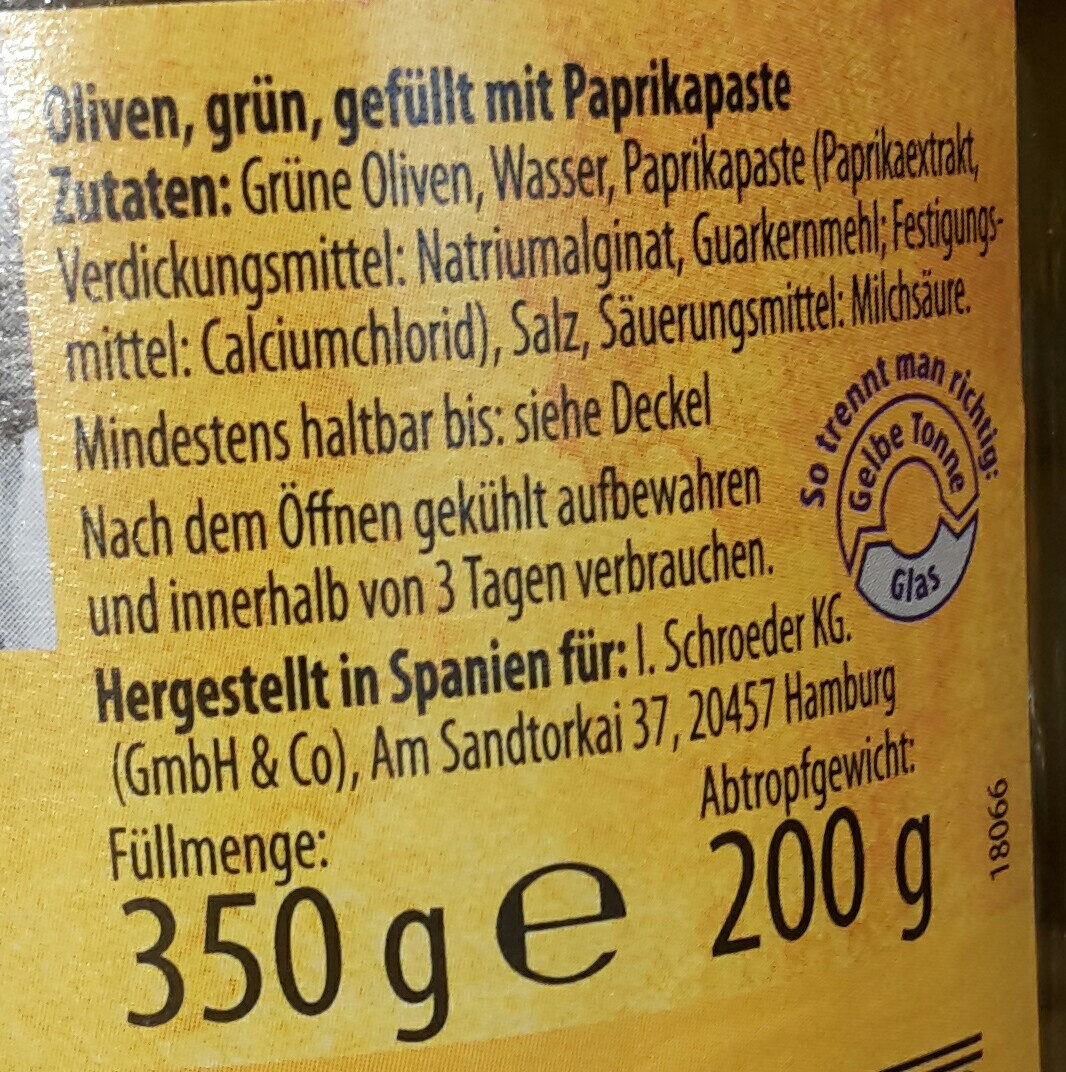Espana Spanische Oliven gefüllt mit Paprikapaste -
Ambiguous barcode: This product has a Restricted Circulation Number barcode for products within a company. This means that different producers and stores can use the same barcode for different products.
×
This product page is not complete. You can help to complete it by editing it and adding more data from the photos we have, or by taking more photos using the app for Android or iPhone/iPad. Thank you!
×
Barcode: 29021857
Categories: Plant-based foods and beverages, Plant-based foods, Pickles, Olive tree products, Plant-based pickles, Olives, Green olives, Stuffed olives, Green stuffed olives
Labels, certifications, awards: Made in Spain
Countries where sold: Germany
Matching with your preferences
Environment
Carbon footprint
Packaging
Transportation
Report a problem
Data sources
Product added on by jw
Last edit of product page on by ruhja.
Product page also edited by kiliweb, openfoodfacts-contributors, prepperapp, vaporous, yuka.sY2b0xO6T85zoF3NwEKvllAZDt2CoCzcJTDil2mq4fOsJ73pfNdC7aWnP6s.
If the data is incomplete or incorrect, you can complete or correct it by editing this page.






